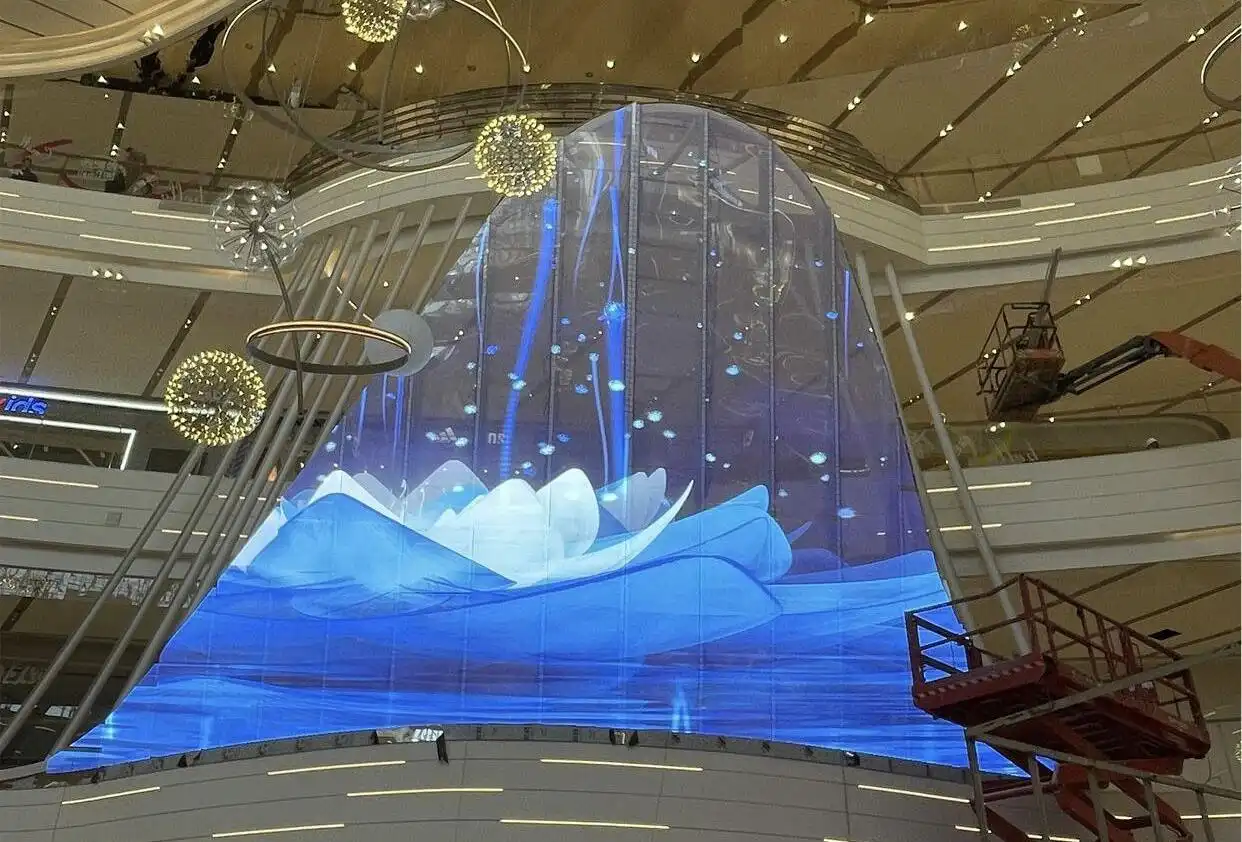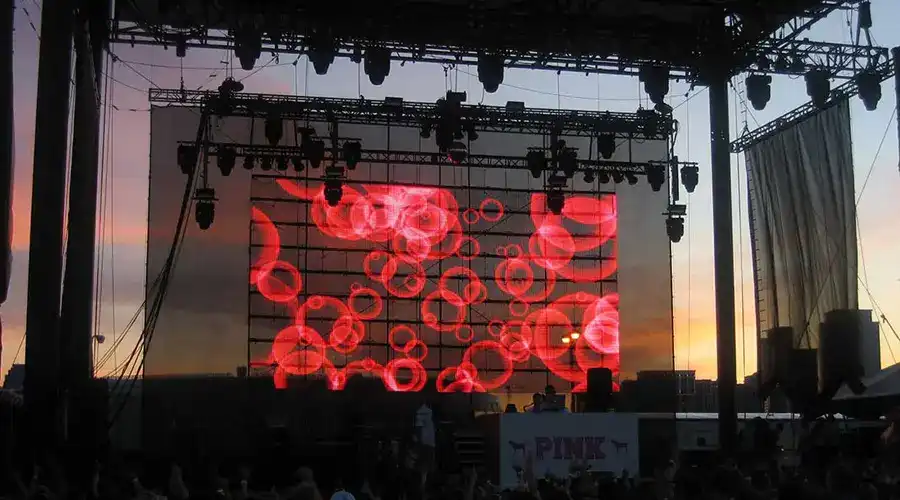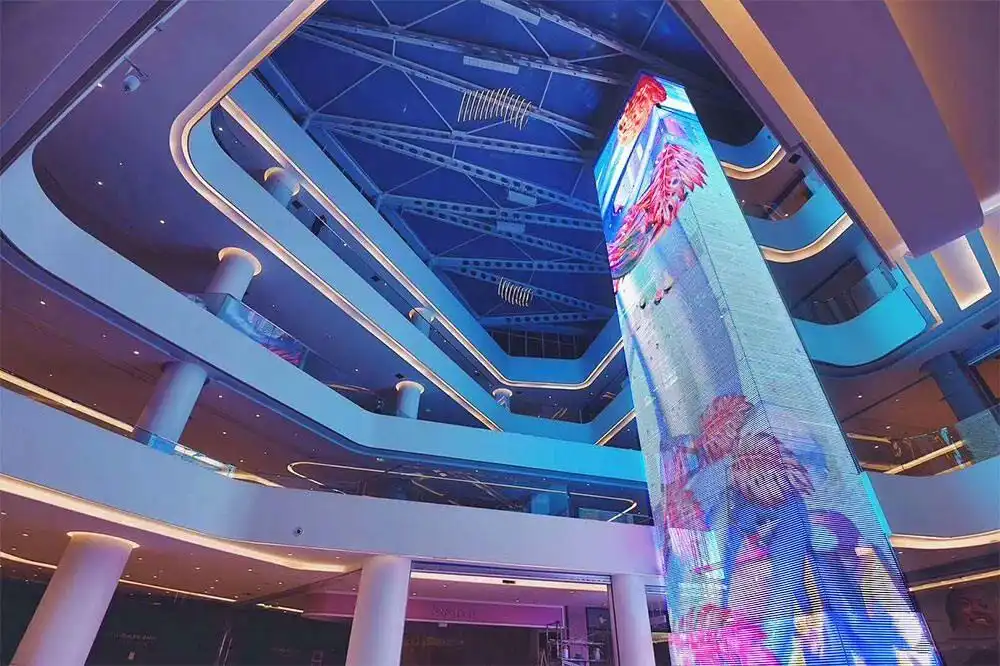LED walls have transformed how we experience visual content, offering ultra-bright, seamless, and scalable displays for everything from live events and retail spaces to boardrooms and broadcast studios. Behind their vibrant images lies a precise system of micro-level LEDs, synchronized signal processing, and modular engineering that enables high-impact digital storytelling on any scale.
An LED wall, also known as a direct-view LED display, is a modular digital screen made up of multiple LED panels. Each panel contains thousands of tiny light-emitting diodes (LEDs), which illuminate individually to create pixels on the screen. By assembling multiple panels side by side, the LED wall becomes a single, large-format display with no visible seams.
The main advantage of LED walls over other display technologies lies in their scalability, brightness, and durability. They can be configured into virtually any size or shape—flat, curved, corner-wrapped, or even 3D—and they deliver consistent performance in both indoor and outdoor settings.

To understand how LED walls work, it’s essential to break down the core components:
a. LED Modules
These are the smallest building blocks. Each module contains a matrix of RGB (Red, Green, Blue) LEDs arranged in a grid. When these LEDs light up in different combinations and intensities, they produce millions of colors.
b. Cabinet or Panel
A cabinet houses several LED modules along with wiring, power distribution, and connection ports. Cabinets are the units that technicians install, connect, and maintain. They are designed to align seamlessly when installed together.
c. Power Supply
Each panel requires a regulated power source to run the LEDs and control boards. High-quality power supplies provide stable voltage and protect the wall from power surges.
d. Receiving Card
This card is installed inside each panel and receives video signals from the main controller. It converts the signal into pixel data that determines which LEDs should light up and how brightly.
e. Sending Controller (or Processor)
This central controller receives input from video sources (laptops, cameras, media servers) and processes the signal to distribute it across all receiving cards in the correct order and timing.
f. Video Input Source
This could be a media player, camera feed, presentation software, or real-time graphics engine, depending on the use case. The video content is usually fed into the processor via HDMI, DVI, or DisplayPort.
3. How Pixel Pitch Affects Clarity and Use
One of the most critical factors in LED wall design is pixel pitch—the distance in millimeters between the centers of two adjacent pixels. Smaller pitch = higher resolution.
Pixel Pitch | Application Area | Ideal Viewing Distance |
0.9–1.5 mm | Boardrooms, TV studios | 1–3 meters |
1.8–2.5 mm | Corporate lobbies, events | 3–6 meters |
3–5 mm | Large venues, auditoriums | 6–15 meters |
6 mm+ | Outdoor billboards | 15+ meters |
Choosing the right pixel pitch depends on how far viewers will stand from the screen. For example, a fine-pitch LED wall with 1.2 mm spacing would be ideal for a conference room, while a 4.8 mm wall suits a concert stage.
4. From Signal to Light: The Workflow Explained
Here’s a step-by-step breakdown of how content is displayed on an LED wall:
Video Source
A computer, video mixer, or media server generates content—whether a static image, video, animation, or live stream.
Signal Input
The source connects to the LED processor via HDMI, DVI, or SDI. The processor resizes and formats the signal to match the wall’s resolution.
Video Distribution
The processor divides the video feed into sections, assigning each portion to a specific panel or group of panels. It sends this data over Ethernet or fiber optic cables.
Receiving Cards Process Data
Each panel receives its portion of the video signal and translates it into commands for each individual LED pixel.
LEDs Illuminate
Based on the signal, red, green, and blue LEDs turn on at specific brightness levels to produce the right color and intensity.
Visual Display
To the human eye, all these tiny pixels blend into one seamless image or video playing in real time.
This entire process happens in milliseconds, enabling LED walls to display smooth, high-frame-rate content without delay or flicker.
5. Brightness, Contrast, and Color Fidelity
One of the standout features of LED walls is their brightness, typically ranging from 800 to over 5,000 nits depending on indoor or outdoor use. This ensures visibility even in direct sunlight or under powerful stage lighting.
Additionally, LED technology offers high contrast ratios—often 5,000:1 or more—thanks to deep blacks and bright whites. Combined with wide color gamuts and accurate calibration, modern LED walls deliver vivid, lifelike images suitable for cinema-quality viewing.

A key reason for the popularity of LED walls is their ability to create a completely seamless display. This is achieved through:
Bezel-free design: Unlike LCD video walls that have visible frame borders, LED panels tile together edge-to-edge with no visible gaps.
Precision alignment hardware: Panels are designed with mechanical alignment features to ensure a flush, uniform surface.
Color and brightness calibration: Factory and on-site calibration ensures that every module displays color and light intensity uniformly.
7. Control and Software Integration
Modern LED walls are managed by powerful content management systems (CMS) or media servers that allow for:
Real-time content updates
Scheduled playlists
Interactive overlays (e.g., touchscreen, QR-code triggers)
Synchronization with external data sources (e.g., live news, stock prices, social media)
Remote control features also allow administrators to monitor performance, detect dead pixels, and adjust brightness or power schedules from a centralized dashboard.
8. Maintenance and Durability
LED walls are built for durability. High-quality installations can last 50,000 to 100,000 hours with proper maintenance.
Common maintenance practices include:
Cleaning: Dust and debris can reduce brightness or cause overheating.
Panel replacement: Damaged modules can be swapped out without replacing the entire wall.
Calibration checks: Routine checks ensure color accuracy and uniformity.
Power system monitoring: Stable voltage and cooling systems extend component life.
For outdoor installations, weatherproofing and proper ventilation are essential.
9. Applications Across Industries
LED walls have become mainstream in diverse fields:
Industry | Application |
Corporate | Lobbies, conference rooms, showrooms |
Entertainment | Concert stages, music festivals, TV sets |
Retail | Window displays, digital signage |
Education | Lecture halls, virtual classrooms |
Sports | Stadium screens, scoreboards |
Transportation | Airports, train stations, bus terminals |
Government | Command centers, public communication |
Hospitality | Hotel lobbies, convention centers |
Each application takes advantage of the LED wall’s adaptability, whether through large-scale engagement or detailed storytelling.

Interactivity is one of the fastest-growing areas in LED wall deployment. Technologies like:
Touch sensors
Motion tracking
Mobile sync (QR codes, app triggers)
Facial recognition for personalized content
are now enabling more engaging user experiences. For example, a retail store might let users browse a virtual product catalog directly on the wall. Or a trade show booth might feature a touch-activated product configurator.
11. Visual Trends: Curved, Transparent, and 3D LED Walls
Today’s LED walls are not limited to flat surfaces. Innovations have led to:
Curved LED walls: Used in immersive domes and wrap-around rooms.
Flexible LED sheets: Allow for column wraps and convex/concave structures.
Transparent LED walls: Great for storefronts, these allow viewers to see both content and the background.
3D illusion walls: Special content mapped to the physical structure can create stunning 3D illusions without glasses.
These advancements expand creative possibilities and help brands stand out in competitive environments.
12. Common Questions (FAQ)
Q1: Do LED walls work in daylight?
Yes. High-brightness panels (2,500 nits and above) are specifically designed for outdoor and daylight use. These displays remain vibrant and readable even under direct sunlight.
Q2: Can an LED wall display different content in different sections?
Absolutely. With the right controller and software, you can split the screen into multiple zones, each playing independent content—videos, images, data feeds, or live streams.
Q3: What is the power consumption of an LED wall?
Power usage varies based on size, brightness, and usage patterns. A typical 500x500 mm panel consumes 100–300 watts. Energy-efficient models and intelligent brightness control can significantly reduce long-term costs.
Q4: Can I install an LED wall outdoors in rainy weather?
Yes, as long as the panels are rated for outdoor use. Look for IP65 or higher ratings, which indicate full weatherproofing. Proper enclosure and drainage systems are also recommended.
Q5: Is there a delay between input and display?
High-quality LED wall systems operate with negligible latency—often under 2 frames (less than 33 milliseconds). This makes them suitable for real-time broadcasting and live events.
13. Looking Ahead: The Future of LED Display Technology
As technology evolves, the next generation of LED walls will feature:
Micro-LED panels: Offering ultra-high resolution with even smaller pixel pitch.
AI-based content control: Automatically adjusting visuals based on audience behavior.
Wireless panel connectivity: Reducing cable clutter and simplifying setup.
Energy harvesting panels: Exploring ways to offset power usage through solar or kinetic energy.
The future of visual communication is intelligent, immersive, and beautifully engineered—and LED walls are leading the charge.
LED walls are more than just screens—they’re sophisticated visual ecosystems composed of micro-level hardware and macro-level storytelling potential. From the pixel pitch and control cards to signal processing and final calibration, every part of the system works in harmony to deliver crisp, vibrant, and immersive visuals.
Understanding how LED walls work helps decision-makers, creatives, and engineers make smarter choices in designing environments that inspire, inform, and engage. Whether it's a six-story outdoor screen or a precision-calibrated boardroom wall, the principles remain the same—and the possibilities are endless.
Hot Recommendations
Hot Products
Get a Free Quote Instantly!
Talk to Our Sales Team Now.
If you are interested in our products, please contact us promptly
Reach out to our sales team to explore customized solutions that perfectly meet your business needs and address any questions you may have.
Email Address:info@reissopto.comFactory Address:Building 6, Huike Flat Panel Display Industrial Park, No. 1, Gongye 2nd Road, Shiyan Shilong Community, Bao'an District, Shenzhen city , China
whatsapp:+8615217757270